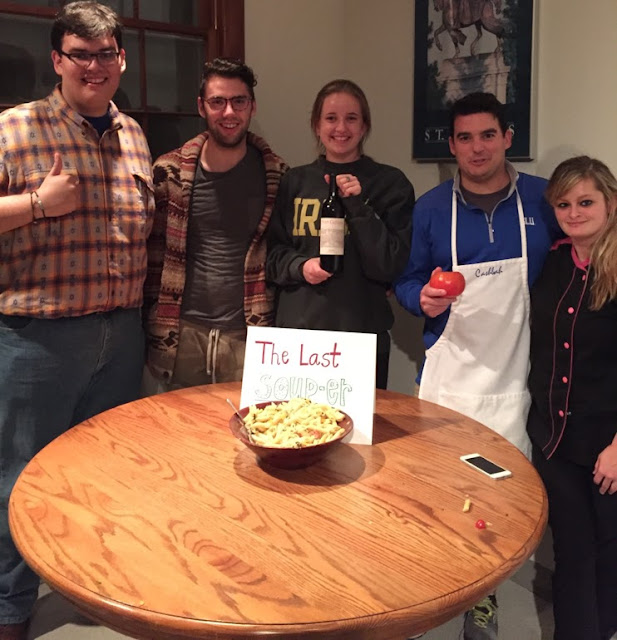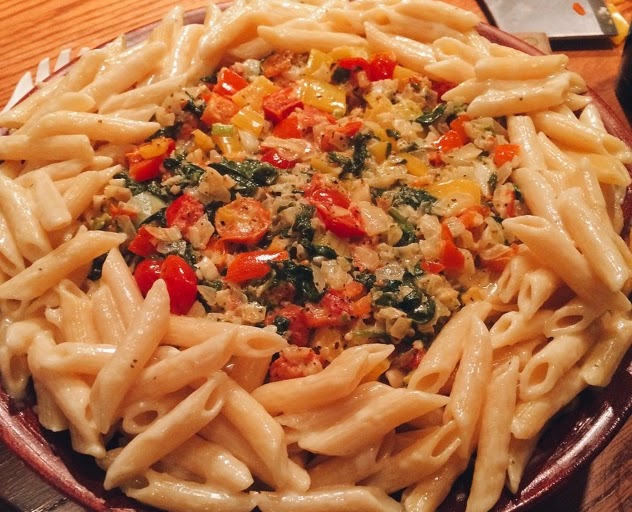By Jessica Baker
A
few weeks ago, I volunteered with Operation Food Search at a Shop n’
Save in Edwardsville, Illinois. Along with three other dietetic
interns, I helped give tours of the grocery store to any customers
who were interested. In return for their time, customers were given a
ten-dollar gift card to use at the store.
Each intern was assigned a different section in the grocery store. As they shopped, customers stopped at each section to learn a little bit about the healthy items available there and be given some ways to save money on them. Each station also provided a recipe to try at home. The four stations were fruits and vegetables, grains, dairy, and protein. As the protein lady or “meat lady,” as I was referred to on more than one occasion, my goal was to provide information about choosing the leanest cuts of meat and getting more bang for your buck by incorporating non-meat protein items into meals.
Although
the tours were targeted at teaching patrons at the grocery store, I
learned much more from the experience than I expected. Standing in
the meat section, it turns out, provided me with insight not only
into nutrition, but also into people in general. Here are the six
biggest lessons I learned:
- This is definitely something I should have known before, but the meat section is cold!!! I was extremely grateful to have brought a sweater. If you ever find yourself in the meat section for an extended period of time, I would recommend wearing shoes with socks to avoid frozen toes.
- Grocery store employees work incredibly hard. The only interaction I’ve ever really had with the behind-the-scenes employees at a supermarket is when I’m picking out a gallon of milk and see a mysterious hand on the other side of the wall replenishing products. However, when there was down time between tour groups, I began to notice a constant stream of employees maintaining the section where I was standing. Over the course of four hours, they moved products, posted new signs about items on sale, and constantly straightened things up. To be honest, I usually get a bit annoyed when I’m shopping and there are employees restocking an area that I’m trying to access. But without them, there wouldn’t be anything for me to access in the first place! We often run through the grocery store, rapidly checking items off of our lists so quickly that we forget to think about what an amazing engineering feat a grocery store is. I can buy a guava from a different country and then get a chicken breast from a farm nearby. It’s rather miraculous, and I’m grateful to have access to it. It’s important to remember, however, that many people don’t. But that’s a post for another day.
- Food is inherently social. I know this is true, but I’ve always thought about it in terms of communal eating – sitting down and sharing a meal with others. However, many of the individuals who visited me at the protein station were eager to share their favorite healthy recipes and ask about mine. I also observed many families, friends, and couples shopping together. Every step of meal preparation, whether it’s planning, shopping, or preparing, can, and often does, involve a group effort. And why shouldn’t it? If we need to eat to live, we might as well do it together.
- Everyone is his or her own food expert. That’s not to say that everyone is a nutrition expert, but for the most part, everyone decides what he or she eats. For example, I recommended the ground turkey taco recipe I was handing out to a college student and her mother, and while the mother was enthusiastic and suggested that her daughter make it in her on-campus apartment, the daughter stated decisively that she did not care for any sort of ground turkey. Sorry, Mom. Similarly, after discussing healthy protein choices with one woman and asking if she had any questions, she responded with, “Nope, I’m going to go buy what I want now; I’m old, I can eat what I please!” The thing is, she was right! I can preach all day about healthy fats and heart health and antioxidants and a myriad of other nutrition topics, but it often takes a lot more than just information to really help someone make a healthy lifestyle change. That’s the challenge of the dietitian: to assess why a person eats how they eat and why they may or may not want to change. It’s definitely not as simple as just handing out turkey taco recipes.
- That being said, education is a great way to get people thinking about changing their eating habits. Or at least thinking about thinking about changing. I saw this after talking about choosing lean ground meat. There was a refrigerator of lean ground chicken conveniently located right across from my station, so it was easy to recommend. After the tour, I saw many people putting the ground chicken into their carts. I also noticed some people looking closely at the labels before making a selection. This could be due to factors other than my brief five-minute spiel – perhaps they favored a particular brand or were comparing prices. But if I influenced even one person to make a healthier choice that day, those four hours were well worth it. Small changes can lead to big ones, and one healthy choice often leads to another.
- Volunteering can help you review and learn a lot about meat and protein! Here’s what I learned and shared with the shoppers:
- Skinless chicken breasts are healthiest, but you can cut the skin off of thighs and drumsticks before you cook them to reduce the fat content.
- When cooking with ground meat like turkey or beef, aim for 10% fat or less, since (1) it contains less saturated fat and (2) because it contains less fat, more meat remains after cooking. In other words, there’s less fat that drains off, leaving you with more actual food.
- When shopping for whole cuts of beef or pork, look for the word “loin” or “round.” Those cuts tend to be the leanest.
- To bulk up the meat that you buy, add some veggies or beans! Black beans are great in chili or taco meat, and you can add vegetables like carrots and onions to either of those as well. When making meatloaf, adding vegetables and oatmeal instead of breadcrumbs is a great way to incorporate some fiber.
- Manager’s specials can be a good way to save some money on groceries, but use them the day you buy them or freeze them, since they tend to be nearing their “best by” date.
- Protein is not all about meat! Eggs, beans, nuts and nut butters, seeds, dairy, and some grains like quinoa are also great sources.
To
learn more or to volunteer with Operation Food Search, please visit
http://www.operationfoodsearch.org/















